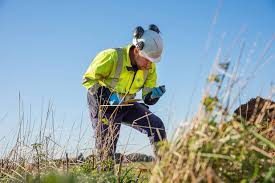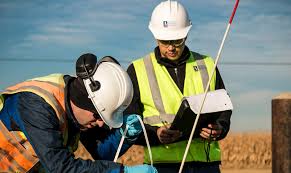Construction site EIA in Egypt is an essential process for evaluating the potential impact of construction activities on the environment and...
Construction site EIA in Egypt is an essential process for evaluating the potential impact of construction activities on the environment and surrounding communities. This assessment is crucial in ensuring sustainable development and minimizing environmental measurements laboratory negative effects on the environment. In this paper, we seek to assess the impact of Egypt's construction site EIA process and its effectiveness in addressing environmental concerns. We will examine the current practices, regulations, and challenges associated with construction site EIA in Egypt, and propose potential improvements for a more comprehensive and efficient evaluation.
Assessing the Impact: Egypt's Construction Site EIA Process focuses on evaluating the environmental impact of construction activities in Egypt. The process involves conducting an environmental service labs Environmental Impact Assessment (EIA) to identify potential environmental risks and proposing measures to mitigate them. This includes assessing the potential impact on air and water quality, biodiversity, and local communities. The EIA process aims to ensure that construction projects in Egypt comply with environmental regulations and promote sustainable development.
The Importance of Environmental Impact Assessment for Construction Sites in Egypt

Environmental Impact Assessment environmental services companies (EIA) is crucial for construction sites in Egypt due to the potential for significant environmental and social impacts. Egypt's rapidly growing population and urbanization have led to increased construction activities, resulting in heightened environmental concerns. EIA helps to identify, predict, and assess potential impacts of construction projects on the environment and local communities. Conducting EIA for construction sites in Egypt allows for the implementation of appropriate mitigation measures to minimize adverse effects on natural resources, ecosystems, and human health. It also facilitates compliance with local regulations and international standards for sustainable development. Additionally, EIA promotes transparency and public participation, ensuring that the concerns and perspectives of stakeholders are considered in decision-making processes. Overall, the importance of EIA for construction sites in Egypt lies in safeguarding the environment and fostering sustainable development in the face of ongoing urban expansion and infrastructure development.
Challenges and Solutions for Conducting EIA for Construction Projects in Egypt

Challenges: Some of the challenges in conducting EIA for construction projects in Egypt include inadequate data availability, limited technical capacity for EIA, and a lack of public participation and stakeholder engagement. Solutions: To address these challenges, it is important to improve data collection and information sharing among relevant agencies, build the capacity of professionals involved in EIA, and promote public participation through awareness campaigns and consultation processes. Additionally, incorporating EIA requirements into the regulatory framework and ensuring enforcement of EIA guidelines can help improve the effectiveness of EIA for construction projects in Egypt.
Best Practices for Implementing EIA on Construction Sites in Egypt
environmental consulting companies near me

Some best practices for implementing EIA on construction sites in Egypt include conducting thorough environmental impact assessments before beginning any construction projects, considering the potential impact on air and water quality, biodiversity, and land resources. It is important to involve stakeholders, including local communities and regulatory agencies, in the EIA process to ensure their concerns and input are considered. Additionally, implementing measures to mitigate any potential negative impacts identified in the EIA is crucial. Regular monitoring and reporting on the environmental impact throughout the construction process is essential to ensure compliance with environmental regulations and to address any issues that may arise. Finally, maintaining open communication and transparency with stakeholders and regulatory agencies is important for demonstrating a commitment to environmental responsibility.
The Role of EIA in Sustainable Development of Construction Projects in Egypt<
environmental consulting agencies/h2>

The Role of EIA in Sustainable Development of Construction Projects in Egypt is crucial in ensuring that environmental and social impacts are adequately addressed and mitigated. Through EIA, potential risks to the environment and local communities can be identified, and measures can be put in place to minimize or eliminate these risks. This contributes to the overall sustainability of construction projects in Egypt, by promoting responsible and environmentally-friendly development practices. EIA helps to ensure that construction projects in Egypt are carried out in a sustainable manner, in line with international standards and best practices. This ultimately leads to the long-term preservation of natural resources and the well-being of local communities.
Key Environmental Considerations for Construction Site EIA in Egypt
Key environmental considerations for construction site Environmental Impact Assessment (EIA) in Egypt include the potential impact on air and water quality, land use, and biodiversity. Construction activities can lead to dust and air pollution, as well as contamination of water sources through runoff and waste disposal. The conversion of natural habitats for construction can also lead to loss of biodiversity. It is important for EIAs to thoroughly assess these potential impacts and propose measures to mitigate them, in order to ensure sustainable development and the protection of Egypt's natural resources. Local regulations and guidelines must be adhered to during the assessment process.
Understanding the Legal Framework for EIA in Construction in Egypt
Understanding the Legal Framework for Environmental Impact Assessment (EIA) in Construction in Egypt involves knowledge of the laws and regulations that govern the assessment process. The main legal document that outlines the requirements for EIA in Egypt is the Environmental Law No. 4 of 1994. This law mandates that all construction projects undergo an EIA to assess their potential environmental impact and ensure compliance with environmental standards. Additionally, there are specific guidelines and regulations set by the Egyptian Environmental Affairs Agency (EEAA) that further detail the EIA process for construction projects. Understanding these legal aspects is crucial for ensuring that construction projects in Egypt adhere to environmental regulations and minimize their impact on the environment.
Case Studies of Successful EIA Implementation for Construction Sites in Egypt
One case study of successful EIA implementation for construction sites in Egypt is the New Administrative Capital project, which is being developed to alleviate overcrowding in Cairo. The EIA for this project has effectively addressed potential environmental impacts such as air and water pollution, land degradation, and wildlife disturbance. Another notable example is the Tahrir Petrochemical Complex, where the EIA successfully managed risks associated with chemical handling, emissions, and waste management. These case studies demonstrate how rigorous EIA implementation can help mitigate potential negative consequences of construction projects in Egypt.

